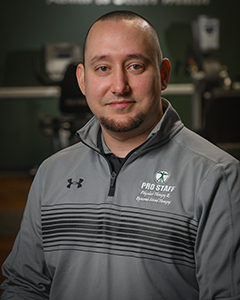Hand Therapy Can Treat 6 Common Conditions Affecting the Hand, Wrist, and Upper Extremities

Did you know that hand injuries are among the most common types of injuries? Athletes commonly experience hand and wrist injuries, with a prevalence rate of 25% observed across a wide range of sports. Furthermore, a recent U.S. Department of Labor study states hand and finger injuries account for 23 percent of all work-related injuries, making them the most frequent preventable injuries. Luckily, injuries to the hand and wrist can be easily treated with the help of hand therapy.
Hand therapy can effectively treat various conditions affecting the hand, wrist, and upper extremities. Whether caused by injuries, surgeries, or genetic factors, hand therapy offers comprehensive rehabilitation to help patients regain optimal function and reduce pain. In this article, we will review six common conditions that can be treated through hand therapy and explore the benefits it offers.
What are 6 Common Conditions Hand Therapy Can Treat?
Hand therapy is an adaptable treatment method that effectively targets several conditions that can arise from various factors, including surgical procedures, non-surgical injuries, and genetic predispositions. Following are six common conditions that hand therapy can treat, providing rehabilitation and improved functionality for individuals of all ages.
- Carpal Tunnel Syndrome: Carpal tunnel syndrome occurs when the median nerve in the wrist becomes compressed or irritated, leading to symptoms such as pain, numbness, and weakness in the hand. Hand therapy plays a crucial role in managing this condition through non-surgical interventions, including exercises, splinting, and ergonomic modifications.
- Tendonitis: Tendonitis refers to the inflammation of tendons, which are the tissues connecting muscles to bones. It often results from overuse or repetitive strain injuries. Hand therapy offers targeted exercises, manual techniques, and modalities to reduce inflammation, improve tendon healing, and restore function.
- Arthritis: Arthritis is a common condition that causes joint inflammation and stiffness. Hand therapy provides a range of treatments to help manage arthritis, including therapeutic exercises, splinting, and pain management techniques, to alleviate symptoms, improve joint mobility, and enhance patients’ quality of life.
- Fractures: Fractures in the hand, wrist, or upper extremities often require rehabilitation to regain strength, range of motion, and functional abilities. Hand therapy offers tailored interventions, including exercises, splinting, and manual techniques, to promote bone healing, prevent stiffness, and facilitate a full recovery.
- Dupuytren’s Contracture: Dupuytren’s contracture is a genetic condition that causes the fingers to bend inward, limiting hand function. Through hand therapy exercises, stretching techniques, and splinting, patients can improve finger mobility and delay the progression of contractures.
- Post-Surgical Rehabilitation: After hand, wrist, or upper extremity surgeries, hand therapy plays a critical role in the recovery process. It helps reduce pain, swelling, and scar tissue formation while improving range of motion, strength, and function. Hand therapists collaborate closely with surgeons to develop customized rehabilitation programs based on individual needs and surgical procedures.
Hand therapy offers a holistic and evidence-based approach to treating these common conditions. With the guidance of certified hand therapists at Pro Staff Physical Therapy, patients can achieve improved outcomes and regain their independence.
What is the Assessment Process?
The assessment process in a physical therapy office specializing in hand therapy involves several screening steps to evaluate the patient’s condition and create an effective treatment plan. The assessment process consists of the following steps:
- Initial Evaluation: The patient meets with the hand therapist for an initial evaluation. The therapist reviews the patient’s medical history, including any previous hand injuries, surgeries, or relevant medical conditions.
- Subjective Assessment: The hand therapist conducts a discussion with the patient to gather subjective information about their symptoms, pain levels, functional limitations, and specific goals. This enables the therapist to understand the patient’s unique needs and concerns.
- Physical Examination: Next, a comprehensive physical examination of the hand, wrist, and upper extremities is conducted. This may involve assessing the range of motion, muscle strength, joint stability, sensation, and coordination. Specialized tests and assessments specific to hand therapy may be conducted to gain more detailed insights into the patient’s condition.
- Functional Assessment: The hand therapist evaluates the patient’s functional abilities, considering tasks such as grasping, manipulating objects, and performing activities of daily living to help identify specific challenges and limitations that need to be addressed during treatment.
- Analysis and Diagnosis: The hand therapist analyzes the data and formulates a diagnosis based on the assessment findings. The therapist identifies the underlying causes of the patient’s symptoms, functional limitations, and areas of impairment.
- Treatment Planning: Using the assessment results and diagnosis, the physical therapist develops an individualized treatment plan. This plan includes specific goals, treatment techniques, modalities, exercise programs, and other interventions tailored to the patient’s needs.
Hand Conditions and Therapies
Occupational and hand therapies are designed to alleviate pain, improve range of motion, enhance strength and dexterity, and restore functional abilities. Let’s explore some common hand therapies used in hand rehabilitation:
- Therapeutic Exercises: Therapeutic exercises target specific muscles, tendons, and joints to improve strength, flexibility, and coordination. They are tailored to the individual’s condition and rehabilitation goals.
- Splinting: Customized splints are commonly prescribed in hand therapy to support and protect the hand or specific joints. Splints help immobilize the hand, reduce pain, and promote healing. They can also assist in correcting deformities and maintaining proper alignment.
- Modalities: Various modalities are incorporated into hand therapy to relieve pain, reduce inflammation, and promote tissue healing. Examples include heat therapy, cold therapy, ultrasound, electrical stimulation, and laser therapy. Modalities can be used as adjunctive treatments to complement other interventions and provide symptomatic relief.
- Activity Modification and Ergonomics: Hand therapists assess patients’ activities and provide recommendations for activity modification and ergonomics. They guide individuals in adopting proper hand and wrist positions, using adaptive equipment, and implementing joint protection techniques to minimize stress on the hand and wrist, prevent further injury, and enhance overall function.
Wrist Conditions and Therapies
Wrist tendinitis, also known as tenosynovitis, is a common condition characterized by inflammation of the tendons in the wrist. Effective therapies and techniques are available to manage wrist tendinitis and promote healing, such as:
- Rest and Immobilization: Resting the affected wrist is crucial to allow the inflamed tendons to heal. Immobilization through the use of splints or braces can help reduce stress on the tendons and promote recovery.
- Physical Therapy: In physical therapy, therapists employ various techniques to reduce inflammation, improve range of motion, and strengthen the wrist. These may include therapeutic exercises such as stretches to strengthen the wrist muscles and help restore flexibility.
- Cold Therapy: Applying cold packs or ice to the affected wrist can help reduce swelling and inflammation. Cold therapy is particularly effective in the acute phase of tendinitis.
- Ultrasound Therapy: Ultrasound waves are used to generate deep heat in the affected tissues, promoting blood flow and accelerating the healing process.
Upper Extremities Conditions and Therapies
Therapies for upper extremities encompass treatment options designed to address conditions affecting the shoulders, arms, elbows, and hands. Some common therapies used for upper extremity rehabilitation are as follows:
- Range of Motion Exercises: Range of motion exercises involve moving the joints in various directions to prevent stiffness and increase flexibility. They can be tailored to target specific joints or muscles affected by conditions such as frozen shoulder, rotator cuff injuries, or elbow stiffness. Range of motion exercises are typically prescribed and guided by an occupational therapist to ensure proper technique and safety.
- Strengthening Exercises: Strengthening exercises involve resistance training using weights, resistance bands, or bodyweight exercises. By gradually increasing the resistance, the muscles in the upper extremities become stronger and more capable of performing daily tasks and functional activities.
- Manual Therapy: Manual therapy techniques can be especially effective for conditions such as adhesive capsulitis (frozen shoulder) or shoulder impingement syndrome. Skilled therapists apply hands-on techniques to mobilize joints, stretch muscles and tendons, and promote tissue healing.
- Electrical Stimulation: Electrical stimulation, such as transcutaneous electrical nerve stimulation (TENS) or neuromuscular electrical stimulation (NMES), can help alleviate pain, reduce muscle spasms, and promote muscle re-education in the upper extremities.
Why Choose Pro Staff for Certified Hand Therapy?
If you’re seeking certified hand therapy services around the Montclair and Nutley, NJ areas, Pro Staff Physical Therapy is a top choice with trained professionals that can help you achieve quick recovery. Our Pro Staff team comprises skilled therapists with advanced certifications and commitment to providing our clients with personalized care, making them a reliable partner in your hand rehabilitation journey.
Schedule an appointment today to learn more about our services and take the first step towards regaining hand function and improving your quality of life.
Pro Staff Institute, LLC, has a network of outpatient physical rehabilitation centers in New Jersey. Pro Staff was founded in 2010 by Frank Pavlisko and Michael Maffucci. Through Frank’s 25 plus years experience in Physical Therapy and Michael’s experience in Management Services, our goal is to exceed customer expectations by providing the highest quality of service in a fun, family, friendly, and encouraging environment.
PRO STAFF LOCATIONS
OFFERING CERTIFIED
HAND THERAPY
Managing Diabetes: The Role of Physical Therapy
Managing Diabetes: The Role of Physical Therapy As of 2024, approximately 38.4 million Americans, or 11.6% of the U.S. population, have diabetes. Of these, 29.7 million cases are diagnosed, while an estimated 8.7 [...]
Staying Active and Injury-Free During Summer Activities
Staying Active and Injury-Free During Summer Activities Summer is a fantastic time to engage in outdoor sports and physical activities. Whether playing soccer, tennis, cycling, or jogging in the park, staying active is [...]
The Importance of Posture: How Proper Alignment Can Prevent Pain and Injury
The Importance of Posture: How Proper Alignment Can Prevent Pain and Injury In today's fast-paced world, where many hours are spent over desks, smartphones, and computers, posture is often neglected. Poor posture can [...]




